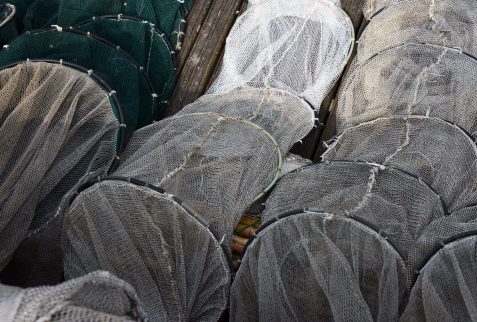Traditional fishing in the lagoon and the “Tocco” draw
Text by Cristiano Mauro.
Fishing in the lagoon was originally carried out with traditional, small, flat-bottomed boats, which are still used today (of course, now with the technological upgrades that have since been developed). Just like in the past, fishermen today still use fixed nets (“grasioi”), planted on the lagoon bed, that channel the fish into dedicated traps made up of three sections, that do not allow the fish to escape once they enter (“cogoi”). This is the traditional fishing method and the type of catch, mainly fish or small invertebrates (for frying) or medium/large sized fish, depends on the size of the mesh used. Marano’s Lagoon is for public use and is subject to a local regulation that dates back over a century, yet is still very up to date in terms of respect for the environment. This regulation states the rules to be followed for a correct use of the lagoon’s fishery resources.
The “Tocco” draw
Twice a year, the “Tocco” draw is carried out: the “Tocco di Quaresima” (“Lent Draw”) in the spring and the “Tocco di Peschere” (“Fishery Draw”) in autumn. On this occasion, the local fishermen who live in the municipality of Marano Lagunare meet together in the town hall and a draw takes place to assign them the possibility to choose their area for fishing. The local council is then notified of the assigned areas, which are then recorded in a dedicated register. In the spring, it is possible to choose two “Seraie” areas, whereas only one can be chosen in the autumn. This fishing method makes the most of the migration of fish/invertebrates that move to different areas of the lagoon in order to reproduce, or that enter the lagoon from the sea in order to reproduce or expand, to then return to the sea in autumn once they reach sexual maturation.
Another two types of traditional fishing are carried out in the lagoon: drift netting to catch fish and seine fishing, using purse seines that are closed by hand, and by small boats, to catch young fish in spring and all fish during the summer. Another activity carried out is the collection of allochthonous bivalve molluscs by hand.
TO KNOW MORE:
La pesca in Friuli ovvero nella Laguna di Marano di Giuseppe Milocco (.pdf)







